Surtsey
 An Icelandic fishing vessel investigates a column of smoke almost 30 miles off of Iceland’s southern coast, with the crew believing it to be another boat in distress. What the crew finds, however, is a new volcanic island poking out of the sea – a submarine eruption that has now broken the surface of the Atlantic. A column of airborne ash and gas rises miles into the air, and within a weak vigorous eruptions create a new island over 1500 feet long, rising 147 feet above sea level. The eruption continues violently, adding more land area to the island but keeping scientists (and sightseers) at bay. The island is named Surtsey after a figure in Norse mythology.
An Icelandic fishing vessel investigates a column of smoke almost 30 miles off of Iceland’s southern coast, with the crew believing it to be another boat in distress. What the crew finds, however, is a new volcanic island poking out of the sea – a submarine eruption that has now broken the surface of the Atlantic. A column of airborne ash and gas rises miles into the air, and within a weak vigorous eruptions create a new island over 1500 feet long, rising 147 feet above sea level. The eruption continues violently, adding more land area to the island but keeping scientists (and sightseers) at bay. The island is named Surtsey after a figure in Norse mythology.
Arecibo!
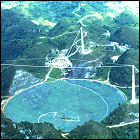 Nestled into a mountainous forest region of Puerto Rico, the Cornell University-funded Arecibo Radio Telescope officially begins operations. With a diameter of a thousand feet, this remains the world’s largest radio telescope until the 21st century. Studies of Earth’s ionosphere are high on the priority list, but radio astronomy isn’t far behind, and important discoveries are made at Arecibo within months of it opening.
Nestled into a mountainous forest region of Puerto Rico, the Cornell University-funded Arecibo Radio Telescope officially begins operations. With a diameter of a thousand feet, this remains the world’s largest radio telescope until the 21st century. Studies of Earth’s ionosphere are high on the priority list, but radio astronomy isn’t far behind, and important discoveries are made at Arecibo within months of it opening.
Channel 37: all radio astronomy, all the time
 The United States Federal Communications Commission places a ten-year hold on television station licenses for UHF channel 37. Channel 37’s bandwidth, in the 608-614 megahertz range, is vital to the burgeoning science of radio astronomy. The FCC immediately sets about reallocating channels on the UHF dial for 18 television stations across America, which had previously been allocated channel 37 on their licenses. One month later, the ban on broadcasting in that part of the spectrum is made global; no television station in the United States, Mexico, Canada, and several other countries will ever occupy those frequencies. When the ban comes up for review again in 1974, it will be made permanent, though a petition from radio astronomers to set aside channel 36 at that time will be denied.
The United States Federal Communications Commission places a ten-year hold on television station licenses for UHF channel 37. Channel 37’s bandwidth, in the 608-614 megahertz range, is vital to the burgeoning science of radio astronomy. The FCC immediately sets about reallocating channels on the UHF dial for 18 television stations across America, which had previously been allocated channel 37 on their licenses. One month later, the ban on broadcasting in that part of the spectrum is made global; no television station in the United States, Mexico, Canada, and several other countries will ever occupy those frequencies. When the ban comes up for review again in 1974, it will be made permanent, though a petition from radio astronomers to set aside channel 36 at that time will be denied.
Syncom 2
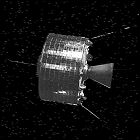 NASA launches the experimental, Hughes Aircraft-built communications satellite Syncom 2 into a geosynchronous orbit, the first human-made satellite to occupy that orbit. (Syncom 1, launched in February, malfunctioned on its way to that orbit, so technically it could be considered the first, though it didn’t arrive in geosynchronous orbit in a functional state.) Capable of handling either a single two-way telephone call, or up to 16 simultaneous teletype transmissions. Early fax transmission tests were also carried out. Syncom 2 could also transmit low-quality video, but with no audio. Control of Syncom 2 is handed over to the Department of Defense in 1965 once NASA has completed its run of experimental communications tests.
NASA launches the experimental, Hughes Aircraft-built communications satellite Syncom 2 into a geosynchronous orbit, the first human-made satellite to occupy that orbit. (Syncom 1, launched in February, malfunctioned on its way to that orbit, so technically it could be considered the first, though it didn’t arrive in geosynchronous orbit in a functional state.) Capable of handling either a single two-way telephone call, or up to 16 simultaneous teletype transmissions. Early fax transmission tests were also carried out. Syncom 2 could also transmit low-quality video, but with no audio. Control of Syncom 2 is handed over to the Department of Defense in 1965 once NASA has completed its run of experimental communications tests.
TIROS-7
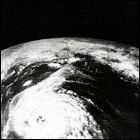 NASA and the United States Weather Bureau launch the seventh experimental TIROS weather satellite, TIROS-7. In addition to observing weather on Earth, TIROS-7 carries instruments to measure electron activity in Earth’s vicinity and to measure the temperature of space. Enhancements designed to extend the satellite’s life prove to be wildly successful: TIROS-7 is the longest-lived of the experimental TIROS series, remaining in service for five years (and, critically, five hurricane seasons).
NASA and the United States Weather Bureau launch the seventh experimental TIROS weather satellite, TIROS-7. In addition to observing weather on Earth, TIROS-7 carries instruments to measure electron activity in Earth’s vicinity and to measure the temperature of space. Enhancements designed to extend the satellite’s life prove to be wildly successful: TIROS-7 is the longest-lived of the experimental TIROS series, remaining in service for five years (and, critically, five hurricane seasons).
Relay 1
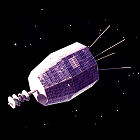 NASA launches the experimental, RCA-built Relay 1 communications satellite. This is the first satellite to relay television signals from the United States to Japan, including the first word of the assassination of President Kennedy in 1963. In 1964, it’s part of the link bringing television coverage of the 1964 Summer Olympics from Tokyo to the U.S., participating in the first multi-satellite broadcast with Syncom 3. This technological first doesn’t come without some problems, however, and Relay 1 ceases to be operational in early 1965, but remains in orbit for decades.
NASA launches the experimental, RCA-built Relay 1 communications satellite. This is the first satellite to relay television signals from the United States to Japan, including the first word of the assassination of President Kennedy in 1963. In 1964, it’s part of the link bringing television coverage of the 1964 Summer Olympics from Tokyo to the U.S., participating in the first multi-satellite broadcast with Syncom 3. This technological first doesn’t come without some problems, however, and Relay 1 ceases to be operational in early 1965, but remains in orbit for decades.
The light-emitting diode
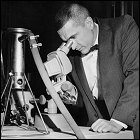 Working at General Electric’s New York R&D lab, scientist Nick Holonyak fires up the first working visible-spectrum light-emitting diode, producing a single small red light. (Texas Instruments had already created infrared LEDs the year before.) Too expensive to mass-produce initially, LEDs will become commonplace in calculators and other electronic devices in the 1970s, though more modern variants in the 1990s will lead to a revolution in lighting and display technology, resulting in flat-screen computer monitors and televisions and spinoff technology such as tablet computers and portable telephones with LED-based touchscreens – all unimaginable in 1962.
Working at General Electric’s New York R&D lab, scientist Nick Holonyak fires up the first working visible-spectrum light-emitting diode, producing a single small red light. (Texas Instruments had already created infrared LEDs the year before.) Too expensive to mass-produce initially, LEDs will become commonplace in calculators and other electronic devices in the 1970s, though more modern variants in the 1990s will lead to a revolution in lighting and display technology, resulting in flat-screen computer monitors and televisions and spinoff technology such as tablet computers and portable telephones with LED-based touchscreens – all unimaginable in 1962.
TIROS-6
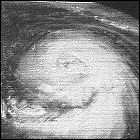 NASA and the United States Weather Bureau launch the sixth experimental TIROS weather satellite, TIROS-6. Launched specifically to allow for better detection of storms during the 1962 Atlantic hurricane season, TIROS-6 has a full workload within days of launch as Hurricane Daisy forms in the Caribbean Sea and makes its way to New England. TIROS-6 finally provides a successful test for NASA’s attempts to keep a weather satellite in service for long-duration missions, lasting over a year in orbit.
NASA and the United States Weather Bureau launch the sixth experimental TIROS weather satellite, TIROS-6. Launched specifically to allow for better detection of storms during the 1962 Atlantic hurricane season, TIROS-6 has a full workload within days of launch as Hurricane Daisy forms in the Caribbean Sea and makes its way to New England. TIROS-6 finally provides a successful test for NASA’s attempts to keep a weather satellite in service for long-duration missions, lasting over a year in orbit.
Telstar
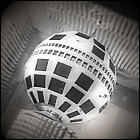 The first Telstar communications satellite is launched, the first attempt to forge a permanent trans-Atlantic telecommunications link with an satellite that both receives and actively retransmits signals. A multinational venture between communications companies and government agencies in America, England and France, Telstar relays the first live trans-Atlantic television broadcast, bringing together the three major American networks of the time and the BBC for a one-of-a-kind joint news broadcast. Live intercontinental telephone calls and other TV broadcasts are also handled by Telstar. Though it’s an experimental satellite, Tesltar is expected to remain in service for some time, but its operational life is reduced to less than a year by, among other things, the effects of high-altitude nuclear weapons tests. Telstar shuts down in February 1963, but remains in orbit to this day.
The first Telstar communications satellite is launched, the first attempt to forge a permanent trans-Atlantic telecommunications link with an satellite that both receives and actively retransmits signals. A multinational venture between communications companies and government agencies in America, England and France, Telstar relays the first live trans-Atlantic television broadcast, bringing together the three major American networks of the time and the BBC for a one-of-a-kind joint news broadcast. Live intercontinental telephone calls and other TV broadcasts are also handled by Telstar. Though it’s an experimental satellite, Tesltar is expected to remain in service for some time, but its operational life is reduced to less than a year by, among other things, the effects of high-altitude nuclear weapons tests. Telstar shuts down in February 1963, but remains in orbit to this day.
Starfish Prime
 The United States launches the Starfish Prime high-altitude nuclear weapons test, detonating a 1.4 megaton warhead at an altitude of 250 miles, the largest space-based nuclear test to date. The flash of the detonation creates a brief “false sunrise” over much of the Pacific Ocean, as well as an unusual auroral display resulting from the sudden release of charged particles trapped within Earth’s magnetic field. An electromagnetic pulse is also observed, more powerful than expected, causing some damage to the Hawaiian power grid. The radiation released in low Earth orbit also interferes with some satellites, including shortening their operational life spans (this includes the Telstar communications satellite, not launched until the next day). Starfish Prime is part of the “Fishbowl” series of high-altitude nuclear tests.
The United States launches the Starfish Prime high-altitude nuclear weapons test, detonating a 1.4 megaton warhead at an altitude of 250 miles, the largest space-based nuclear test to date. The flash of the detonation creates a brief “false sunrise” over much of the Pacific Ocean, as well as an unusual auroral display resulting from the sudden release of charged particles trapped within Earth’s magnetic field. An electromagnetic pulse is also observed, more powerful than expected, causing some damage to the Hawaiian power grid. The radiation released in low Earth orbit also interferes with some satellites, including shortening their operational life spans (this includes the Telstar communications satellite, not launched until the next day). Starfish Prime is part of the “Fishbowl” series of high-altitude nuclear tests.
TIROS-5
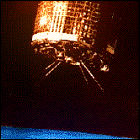 NASA and the United States Weather Bureau launch the fifth experimental TIROS weather satellite, TIROS-5. Further refinements to the basic TIROS satellite system are made, including new systems designed to keep the satellite in orbit – and in service – for a much longer period of time. A problem with the Delta rocket used to launch TIROS-5 puts the satellite in an elliptical orbit which is maintained for less than six months.
NASA and the United States Weather Bureau launch the fifth experimental TIROS weather satellite, TIROS-5. Further refinements to the basic TIROS satellite system are made, including new systems designed to keep the satellite in orbit – and in service – for a much longer period of time. A problem with the Delta rocket used to launch TIROS-5 puts the satellite in an elliptical orbit which is maintained for less than six months.
TIROS-4
 NASA and the United States Weather Bureau launch the fourth experimental TIROS weather satellite, TIROS-4. Further refinements to the basic TIROS satellite system are made, and after TIROS-3’s discovery of a hurricane in the Atlantic well before it his the US, new enhancements are introduced specifically for early hurricane detection. TIROS-4 remains in orbit for less than six months.
NASA and the United States Weather Bureau launch the fourth experimental TIROS weather satellite, TIROS-4. Further refinements to the basic TIROS satellite system are made, and after TIROS-3’s discovery of a hurricane in the Atlantic well before it his the US, new enhancements are introduced specifically for early hurricane detection. TIROS-4 remains in orbit for less than six months.
OSCAR-1
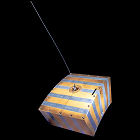 OSCAR-1, an experimental satellite designed and built by amateur radio engineers for a technology test, is launched as a secondary payload aboard an Air Force rocket whose primary payload is a reconnaissance satellite. This is the first launch in history with a secondary payload, and the first payload not developed by a specific government or its agencies. The amateur radio engineers of Project OSCAR built the simple transmitter satellite for a grand total of $35, with a finite battery life and no attitude control thrusters of any kind, to transmit the message “HI” in the 2-meter band until the battery expired (which happens a few weeks before the satellite re-enters Earth’s atmosphere in late January 1962). A nearly-identical OSCAR-2 satellite will be launched in June 1962, while OSCAR-3, launched in 1965, is capable of receiving and retransmitting signals.
OSCAR-1, an experimental satellite designed and built by amateur radio engineers for a technology test, is launched as a secondary payload aboard an Air Force rocket whose primary payload is a reconnaissance satellite. This is the first launch in history with a secondary payload, and the first payload not developed by a specific government or its agencies. The amateur radio engineers of Project OSCAR built the simple transmitter satellite for a grand total of $35, with a finite battery life and no attitude control thrusters of any kind, to transmit the message “HI” in the 2-meter band until the battery expired (which happens a few weeks before the satellite re-enters Earth’s atmosphere in late January 1962). A nearly-identical OSCAR-2 satellite will be launched in June 1962, while OSCAR-3, launched in 1965, is capable of receiving and retransmitting signals.
AN602: Tsar Bomba
 The Soviet Union detonates the most powerful thermonuclear weapon built to date, code-named AN602, or, more informally, “Tsar Bomba”. Though it’s designed to deliver a yield of 100 megatons, the 27-ton device is only fueled enough to produce a 50-megaton explosion, still enough to be detected by other nations. (A U.S. reconnaissance aircraft is close enough to witness the detonation, so the test is hardly a secret to the western world.) The detonation registers on seismic sensors, and interferes with radio transmissions nearby for nearly an hour; the explosion is visible as far away as Norway and Alaska. Due to modifications made to avoid endangering the Soviet population, fallout is minimal, though that might not be the case were the weapon to be deployed offensively.
The Soviet Union detonates the most powerful thermonuclear weapon built to date, code-named AN602, or, more informally, “Tsar Bomba”. Though it’s designed to deliver a yield of 100 megatons, the 27-ton device is only fueled enough to produce a 50-megaton explosion, still enough to be detected by other nations. (A U.S. reconnaissance aircraft is close enough to witness the detonation, so the test is hardly a secret to the western world.) The detonation registers on seismic sensors, and interferes with radio transmissions nearby for nearly an hour; the explosion is visible as far away as Norway and Alaska. Due to modifications made to avoid endangering the Soviet population, fallout is minimal, though that might not be the case were the weapon to be deployed offensively.
TIROS-3
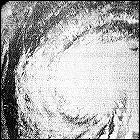 NASA and the United States Weather Bureau launch the third experimental TIROS weather satellite, TIROS-3. Further refinements to the basic TIROS satellite system are made, but one of the satellite’s two television cameras fails within days of going into service. TIROS-3 proves the future life-saving potential of weather satellites by giving Earthbound meteorologists advance warning of the formation and strengthening of Hurricane Esther well before it makes landfall on the east coast of the United States. TIROS-3 is operational for less than a year.
NASA and the United States Weather Bureau launch the third experimental TIROS weather satellite, TIROS-3. Further refinements to the basic TIROS satellite system are made, but one of the satellite’s two television cameras fails within days of going into service. TIROS-3 proves the future life-saving potential of weather satellites by giving Earthbound meteorologists advance warning of the formation and strengthening of Hurricane Esther well before it makes landfall on the east coast of the United States. TIROS-3 is operational for less than a year.
Gravitational assist
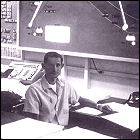 Recent Jet Propulsion Laboratory hire Michael Minovitch submits the first of a series of papers and technical memorandums on the possibility of using carefully-calculated gravitational assist maneuvers to speed transit time between celestial bodies while requiring minimal engine/fuel use. Where most previous scientific thought concentrated on using engine burns (and a lot of fuel) to cancel the effects of a planet’s gravity, Minovitch demonstrated that gravity could be a big help with a carefully calculated trajectory. Though nearly every planetary mission since then has capitalized on Minovitch’s research, it was initially rejected by JPL. Minovitch’s calculations are later revisited by Caltech grad student Gary Flandro, who flags down a particular combination of Minovitch’s pre-computed trajectories for a “grand tour” of the outer solar system, a mission which will eventually be known – in a somewhat scaled-down, less grand form – as Voyager.
Recent Jet Propulsion Laboratory hire Michael Minovitch submits the first of a series of papers and technical memorandums on the possibility of using carefully-calculated gravitational assist maneuvers to speed transit time between celestial bodies while requiring minimal engine/fuel use. Where most previous scientific thought concentrated on using engine burns (and a lot of fuel) to cancel the effects of a planet’s gravity, Minovitch demonstrated that gravity could be a big help with a carefully calculated trajectory. Though nearly every planetary mission since then has capitalized on Minovitch’s research, it was initially rejected by JPL. Minovitch’s calculations are later revisited by Caltech grad student Gary Flandro, who flags down a particular combination of Minovitch’s pre-computed trajectories for a “grand tour” of the outer solar system, a mission which will eventually be known – in a somewhat scaled-down, less grand form – as Voyager.
Time to take longer strides
 At a special joint session of Congress called to discuss “urgent national needs,” President John F. Kennedy sets a new goal for NASA (which has only just put a single American astronaut into space): “I believe that this nation should commit itself to achieving the goal, before this decade is out, of landing a man on the moon and returning him safely to the earth. No single space project in this period will be more impressive to mankind, or more important for the long-range exploration of space, and none will be so difficult or expensive to accomplish.” Kennedy requests that Congress pass space-related budgets totaling half a billion dollars for 1962 alone (encompassing not only the Apollo program, but nuclear rocket development, weather satellite development, and communication satellites).
At a special joint session of Congress called to discuss “urgent national needs,” President John F. Kennedy sets a new goal for NASA (which has only just put a single American astronaut into space): “I believe that this nation should commit itself to achieving the goal, before this decade is out, of landing a man on the moon and returning him safely to the earth. No single space project in this period will be more impressive to mankind, or more important for the long-range exploration of space, and none will be so difficult or expensive to accomplish.” Kennedy requests that Congress pass space-related budgets totaling half a billion dollars for 1962 alone (encompassing not only the Apollo program, but nuclear rocket development, weather satellite development, and communication satellites).
Sagan: let’s terraform Venus
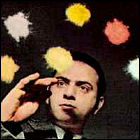 In the journal Science, Carl Sagan proposes an audacious scheme to alter the chemistry of the atmosphere of Venus, making it habitable for humans. His plan involves depositing algae colonies into the planet’s clouds to begin converting the planet’s carbon dioxide into breathable oxygen, and the idea is years ahead of its time (and will later prove to be impractical when more direct studies are made of the Venusian atmosphere).
In the journal Science, Carl Sagan proposes an audacious scheme to alter the chemistry of the atmosphere of Venus, making it habitable for humans. His plan involves depositing algae colonies into the planet’s clouds to begin converting the planet’s carbon dioxide into breathable oxygen, and the idea is years ahead of its time (and will later prove to be impractical when more direct studies are made of the Venusian atmosphere).
TIROS-2
 NASA and the United States Weather Bureau launch the second experimental TIROS weather satellite, TIROS-2. Though almost identical to its short-lived predecessor, TIROS-2 is outfitted with a new stabilization system which uses detection of Earth’s magnetic field to properly orient the satellite. TIROS-2 functions successfully for just over one year.
NASA and the United States Weather Bureau launch the second experimental TIROS weather satellite, TIROS-2. Though almost identical to its short-lived predecessor, TIROS-2 is outfitted with a new stabilization system which uses detection of Earth’s magnetic field to properly orient the satellite. TIROS-2 functions successfully for just over one year.
Courier 1B
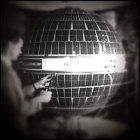 The U.S. Air Force launches the first active-relay communications satellite into orbit, Courier 1B (the original Courier 1 having been lost to a faulty launch vehicle earlier). Unlike the reflective Echo 1 satellite, Courier 1B uses power from the solar cells covering its spherical casing to reboost and retransmit the signals it receives from Earth. Once again, a message from President Eisenhower is transmitted, this time to be received by the United Nations. Clourier 1B remains functional for just over two weeks before a glitch renders it useless.
The U.S. Air Force launches the first active-relay communications satellite into orbit, Courier 1B (the original Courier 1 having been lost to a faulty launch vehicle earlier). Unlike the reflective Echo 1 satellite, Courier 1B uses power from the solar cells covering its spherical casing to reboost and retransmit the signals it receives from Earth. Once again, a message from President Eisenhower is transmitted, this time to be received by the United Nations. Clourier 1B remains functional for just over two weeks before a glitch renders it useless.
Echo 1
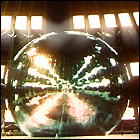 The experimental communications relay satellite Echo 1 is launched into orbit by NASA. A 100-foot metalized Mylar balloon, Echo 1 is a demonstration of passive signal relay, carrying no powered transmitters of its own; its reflective surface simply bounces signals back to Earth. Microwave signals, radio, telephone and TV signals are all successfully relayed via Echo 1; it remains in orbit for four months.
The experimental communications relay satellite Echo 1 is launched into orbit by NASA. A 100-foot metalized Mylar balloon, Echo 1 is a demonstration of passive signal relay, carrying no powered transmitters of its own; its reflective surface simply bounces signals back to Earth. Microwave signals, radio, telephone and TV signals are all successfully relayed via Echo 1; it remains in orbit for four months.
Building Arecibo
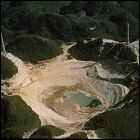 Proposed and designed by Cornell University, and funded by the Adavanced Research Projects Agency (ARPA), the Arecibo Ionospheric Research Center – a thousand-foot radar and radio telescope dish – begins construction in a natural limestone bowl south of Barrio Esparanza, Arecibo, Puerto Rico. Construction will take over three years, at a cost of nearly $10,000,000, with a steel feed receiver structure supported in mid-air over the parabolic dish by some five miles of steel cables. Facilities are constructed for scientists visiting the eventual facility, and additional facilities are constructed to shape aluminum into the mesh structure of the telescope dish on-site, a more economical approach than having those parts of the telescope shipped in from outside. Though conceived and pitched as a means of studying the ionosphere, with possible defense applications such as missile detection, the Arecibo facility will makes its best known contributions to astronomy after it opens.
Proposed and designed by Cornell University, and funded by the Adavanced Research Projects Agency (ARPA), the Arecibo Ionospheric Research Center – a thousand-foot radar and radio telescope dish – begins construction in a natural limestone bowl south of Barrio Esparanza, Arecibo, Puerto Rico. Construction will take over three years, at a cost of nearly $10,000,000, with a steel feed receiver structure supported in mid-air over the parabolic dish by some five miles of steel cables. Facilities are constructed for scientists visiting the eventual facility, and additional facilities are constructed to shape aluminum into the mesh structure of the telescope dish on-site, a more economical approach than having those parts of the telescope shipped in from outside. Though conceived and pitched as a means of studying the ionosphere, with possible defense applications such as missile detection, the Arecibo facility will makes its best known contributions to astronomy after it opens.
Fire the laser!
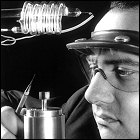 At the Hughes Research Laboratory in California, physicist Ted Maiman conducts the first completely successful laser demonstration, resulting in a brief pulse fired through a ruby. Though the concept of lasers had been published in the 1950s, Maiman is the first to develop a fully working test article. Within a few years, similar ruby lasers are used for numerous military applications, as well as early holography. Maiman’s test laser, when demonstrated again at a conference in 2010, is still operational.
At the Hughes Research Laboratory in California, physicist Ted Maiman conducts the first completely successful laser demonstration, resulting in a brief pulse fired through a ruby. Though the concept of lasers had been published in the 1950s, Maiman is the first to develop a fully working test article. Within a few years, similar ruby lasers are used for numerous military applications, as well as early holography. Maiman’s test laser, when demonstrated again at a conference in 2010, is still operational.
TIROS-1
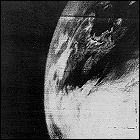 The very first weather satellite, TIROS-1, is launched by the United States. Built under contract by RCA, the nearly-300-pound satellite’s black & white cameras offer the first view of Earth’s cloud systems and weather patterns from orbit. Tiros-1 remains operational for just 78 days, but proves the viability of relying on satellites for weather observation and forceasting.
The very first weather satellite, TIROS-1, is launched by the United States. Built under contract by RCA, the nearly-300-pound satellite’s black & white cameras offer the first view of Earth’s cloud systems and weather patterns from orbit. Tiros-1 remains operational for just 78 days, but proves the viability of relying on satellites for weather observation and forceasting.
Weather radar, pre-Doppler
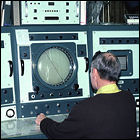 The U.S. Weather Bureau installs the first WSR-57 weather radar in what in intended to eventually be a network of weather radars spanning the entire country. Derived from World War II radars, the WSR-57 is first installed at the National Hurricane Center in Miami, Florida, where it offers as much as two days’ advance notice of storms approaching the Florida coast in the years before weather satellites. This radar remains in service until 1992, when it is literally ripped off the NHC’s roof by the winds of Hurricane Andrew. It is later replaced by a WSR-88 NEXRAD radar, though by that time satellite imagery has become the primary means of remotely detecting major tropical weather events.
The U.S. Weather Bureau installs the first WSR-57 weather radar in what in intended to eventually be a network of weather radars spanning the entire country. Derived from World War II radars, the WSR-57 is first installed at the National Hurricane Center in Miami, Florida, where it offers as much as two days’ advance notice of storms approaching the Florida coast in the years before weather satellites. This radar remains in service until 1992, when it is literally ripped off the NHC’s roof by the winds of Hurricane Andrew. It is later replaced by a WSR-88 NEXRAD radar, though by that time satellite imagery has become the primary means of remotely detecting major tropical weather events.
Project SCORE: first communication satellite
 With engineers and ground controllers working under absolute secrecy, the U.S. Advanced Research Projects Agency launches the Atlas rocket-based SCORE satellite, an experimental communications satellite capable of recording four-minute audio messages from the ground for later playback to another part of the world. Though the first communication transmitted to Earth by SCORE is a message from President Eisenhower wishing listeners a peaceful Christmas, there’s little doubt that it’s a thinly-veiled military hardware demonstration. SCORE remains in orbit for only a few weeks before burning up in Earth’s atmosphere.
With engineers and ground controllers working under absolute secrecy, the U.S. Advanced Research Projects Agency launches the Atlas rocket-based SCORE satellite, an experimental communications satellite capable of recording four-minute audio messages from the ground for later playback to another part of the world. Though the first communication transmitted to Earth by SCORE is a message from President Eisenhower wishing listeners a peaceful Christmas, there’s little doubt that it’s a thinly-veiled military hardware demonstration. SCORE remains in orbit for only a few weeks before burning up in Earth’s atmosphere.
The Thousand Foot Radio Telescope
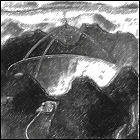 After months of lobbying the U.S. Air Force and the Advanced Research Projects Agency (ARPA) for help in funding a large-aperture radar/radio telescope dish for studies of Earth’s ionosphere and the space that lies beyond, Cornell University’s Bill Gordon publishes a report in the journal of the School of Electrical Engineering. Gordon’s report, setting out the basic parameters for the project, includes a reflector dish diameter of one thousand feet – a daunting prospect from a structural engineering perspective. Sites in Texas and upstate New York are considered before a natural limestone “bowl” south of the city of Arecibo, Puerto Rico emerges as a promising candidate site.
After months of lobbying the U.S. Air Force and the Advanced Research Projects Agency (ARPA) for help in funding a large-aperture radar/radio telescope dish for studies of Earth’s ionosphere and the space that lies beyond, Cornell University’s Bill Gordon publishes a report in the journal of the School of Electrical Engineering. Gordon’s report, setting out the basic parameters for the project, includes a reflector dish diameter of one thousand feet – a daunting prospect from a structural engineering perspective. Sites in Texas and upstate New York are considered before a natural limestone “bowl” south of the city of Arecibo, Puerto Rico emerges as a promising candidate site.
The integrated circuit
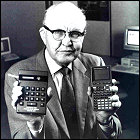 Implementing a revolutionary new take on an idea that has existed on paper since the 1940s, recently-hired Texas Instruments engineer Jack Kilby demonstrates the first fully-functional integrated circuit, with all of the electronic components encased in germanium. While the U.S. Air Force immediately places an order for TI’s new integrated circuits, other engineers continue to refine Kilby’s invention, with Fairchild Semiconductor producing ICs encased in silicon. The move to silicon for ICs leads to smaller electronic devices and the development of microcomputer technology.
Implementing a revolutionary new take on an idea that has existed on paper since the 1940s, recently-hired Texas Instruments engineer Jack Kilby demonstrates the first fully-functional integrated circuit, with all of the electronic components encased in germanium. While the U.S. Air Force immediately places an order for TI’s new integrated circuits, other engineers continue to refine Kilby’s invention, with Fairchild Semiconductor producing ICs encased in silicon. The move to silicon for ICs leads to smaller electronic devices and the development of microcomputer technology.
Doppler weather radar
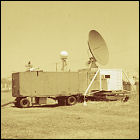 The U.S. Weather Bureau uses a mobile Doppler radar transmitting and receiving in the 3cm bandwidth to measure wind speeds in a tornado striking El Dorado, Kansas, which kills 13 people living in that city. With Doppler radar’s ability to detect and measure the velocity of wind and rain moving toward and away from the radar itself, it is ideally suited for tornado observations and detection. This mobile radar is later given to the Bureau’s National Severe Storms Laboratory in the 1960s, and is the beginning of a lengthy research program that culminates in the nationwide rollout of Doppler-based NEXRAD (Next Generation Radar) in the 1990s.
The U.S. Weather Bureau uses a mobile Doppler radar transmitting and receiving in the 3cm bandwidth to measure wind speeds in a tornado striking El Dorado, Kansas, which kills 13 people living in that city. With Doppler radar’s ability to detect and measure the velocity of wind and rain moving toward and away from the radar itself, it is ideally suited for tornado observations and detection. This mobile radar is later given to the Bureau’s National Severe Storms Laboratory in the 1960s, and is the beginning of a lengthy research program that culminates in the nationwide rollout of Doppler-based NEXRAD (Next Generation Radar) in the 1990s.
ARPA
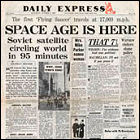 Under the direction of President Eisenhower, the U.S. Department of Defense establishes a high-tech think tank, the Advanced Research Projects Agency (ARPA), to conduct scientific and technological research with both national security implications and purely for technological advancement. The formation of ARPA is a direct response to the Soviet launch of the Sputnik satellite, and in the years ahead ARPA will lay the cornerstone of what will later become known as the Internet, as well as making significant strides in space science, though the space-related part of ARPA’s initial charter will later be transferred to a new agency called NASA. As the Cold War heats up, ARPA will be renamed DARPA (Defense Advanced Research Projects Agency) and its slate of R&D projects will become almost entirely military-oriented.
Under the direction of President Eisenhower, the U.S. Department of Defense establishes a high-tech think tank, the Advanced Research Projects Agency (ARPA), to conduct scientific and technological research with both national security implications and purely for technological advancement. The formation of ARPA is a direct response to the Soviet launch of the Sputnik satellite, and in the years ahead ARPA will lay the cornerstone of what will later become known as the Internet, as well as making significant strides in space science, though the space-related part of ARPA’s initial charter will later be transferred to a new agency called NASA. As the Cold War heats up, ARPA will be renamed DARPA (Defense Advanced Research Projects Agency) and its slate of R&D projects will become almost entirely military-oriented.